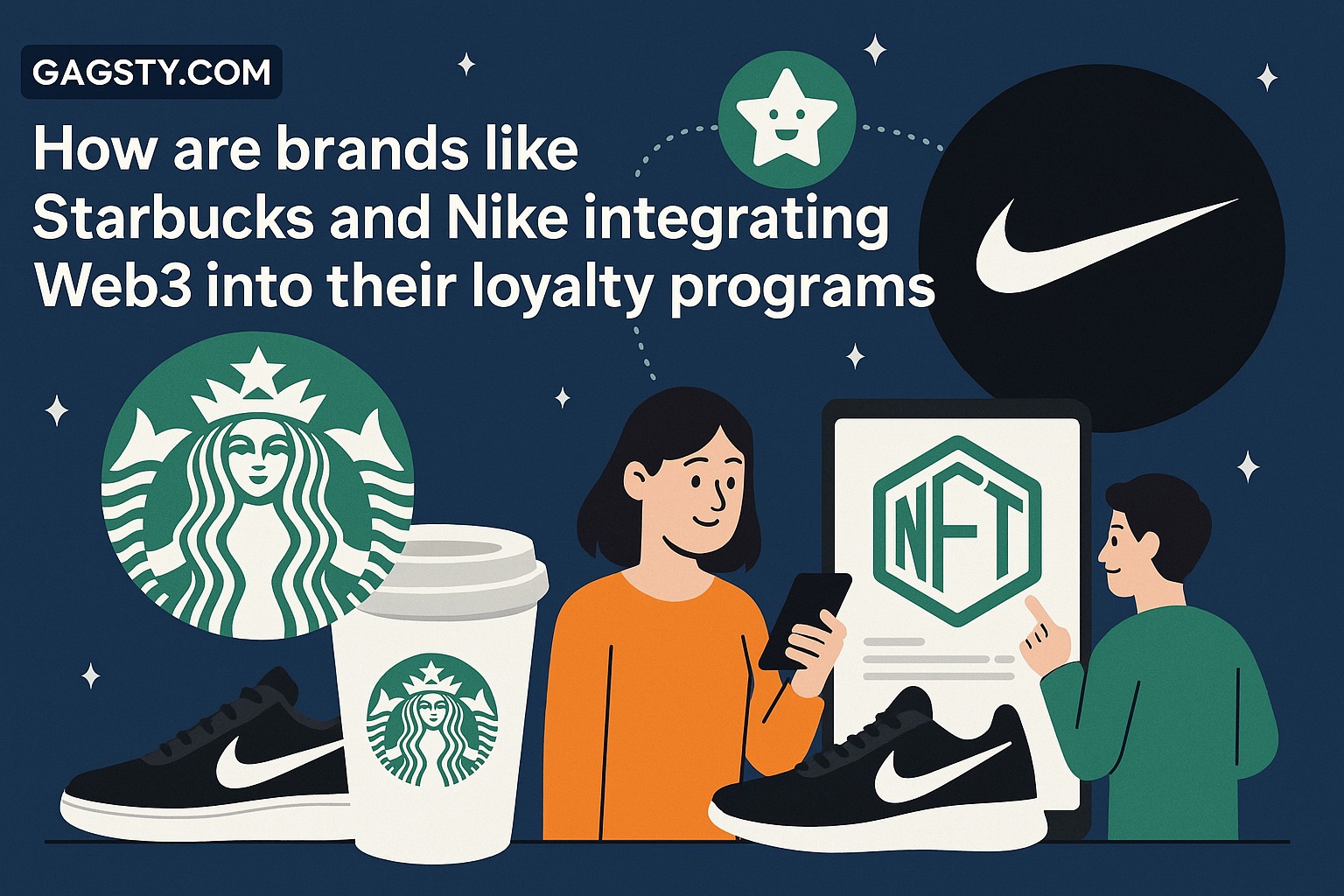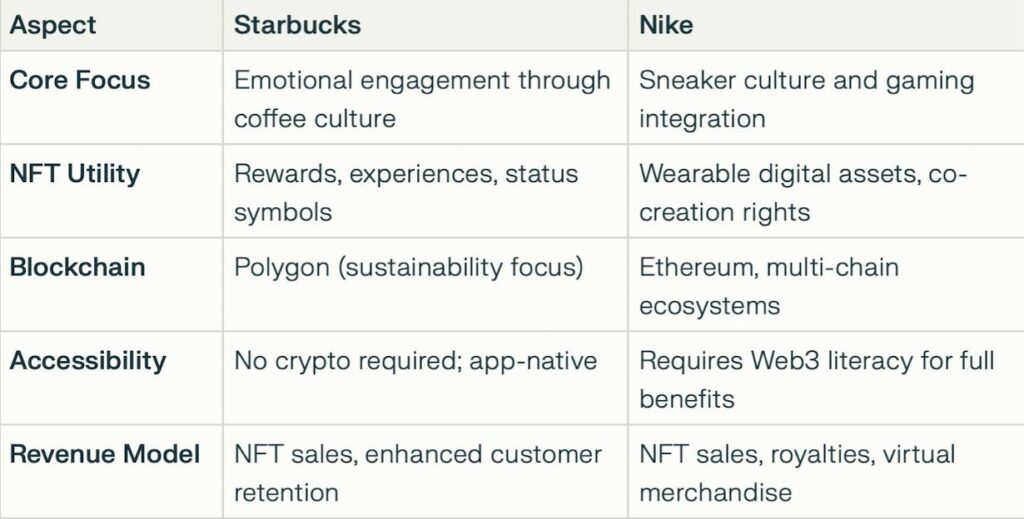How are brands like Starbucks and Nike integrating Web3 into their loyalty programs

Web3 Loyalty Programs: How Starbucks and Nike Are Redefining Customer Engagement
Brands like Starbucks and Nike are pioneering the integration of Web3 technologies into their loyalty programs, leveraging blockchain, NFTs, and decentralized ecosystems to create immersive, community-driven experiences. These initiatives blend digital ownership with real-world rewards, setting new standards for customer engagement. Below, we analyze their strategies, technical implementations, and outcomes.
Starbucks Odyssey: Brewing Web3-Powered Loyalty
Starbucks launched Odyssey in 2022, a Web3 extension of its existing Starbucks Rewards program. This initiative uses blockchain technology to deepen customer relationships through gamified experiences and digital collectibles.
Key Features
1. NFT “Journey Stamps”: Members earn NFTs by completing interactive challenges (e.g., coffee trivia, virtual tastings). Each stamp’s rarity determines its point value, unlocking tiered rewards like exclusive merchandise, virtual classes, or trips to Starbucks’ Costa Rican coffee farm.
2. Polygon Blockchain: Starbucks partnered with Polygon for its low fees, carbon-neutral network, and scalability. This allows gas-free NFT transactions and aligns with the company’s sustainability goals.
3. Mainstream Accessibility: No cryptocurrency or external wallets are required. Users interact via Starbucks’ native app, lowering entry barriers for non-Web3 audiences.
Business Impact
• Rapid Adoption: Sold 2,000 NFTs in 20 minutes during early releases.
• Enhanced Engagement: Combines emotional brand connections with tangible rewards, increasing customer retention.
• Interoperability: NFTs function as cross-platform status symbols, usable in future metaverse applications.
Nike’s .Swoosh Platform: Tokenizing Sneaker Culture
Nike’s .Swoosh Web3 platform targets sneaker enthusiasts and gamers, blending digital collectibles with community co-creation.
Strategic Components
1. Virtual Product NFTs: Users collect, trade, and co-design digital sneakers and apparel. These assets are usable in games like Fortnite, attracting 240 million monthly active users.
2. AR Integration: The AR Sneaker Try-On (June 2023) lets customers visualize products via smartphones, reducing returns and boosting confidence in online purchases.
3. Token-Gated Benefits: NFT holders gain access to exclusive drops, events, and royalties from collaborative designs. For example, a Murakami-designed Cryptokick NFT sold for $134,000.
Technical Infrastructure
• Multi-Chain Compatibility: Integrates with Ethereum and other chains for seamless asset transfers.
• Omnichannel Ecosystem: Connects four apps (Nike App, SNKRS, Nike Run Club, Nike Training Club) to unify Web2 and
Web3 experiences.
Outcomes
• Revenue Growth: Generated $180M+ from NFT primary sales and secondary royalties.
• Community Loyalty: Members spend 3x more than non-members, driven by exclusivity and co-creation opportunities.
Comparative Analysis: Web3 Strategies and Outcomes

The Web3 Loyalty Blueprint: Lessons for Brands
1. Lower Barriers: Starbucks’ wallet-free model demonstrates the importance of bridging Web2 and Web3 audiences.
2. Community Co-Creation: Nike’s collaborative designs foster deeper brand loyalty and recurring revenue.
3. Interoperability: Both brands ensure digital assets retain value across platforms, future-proofing investments.
4. Sustainability: Choosing eco-friendly blockchains (e.g., Polygon) aligns with corporate ESG goals.
Challenges and Future Directions
• Regulatory Compliance: Programs must navigate evolving KYC/AML standards, particularly with NFTs.
• Scalability: High-traffic platforms require robust Layer-2/Layer-3 solutions to maintain performance.
• Education: Simplifying Web3 jargon (as Reddit did with “Collectible Avatars”) remains critical for mass adoption.
Starbucks and Nike exemplify how Web3 transforms loyalty programs from transactional systems into dynamic, participatory ecosystems. By prioritizing digital ownership, community engagement, and cross-platform utility, these brands are not only retaining customers but also cultivating passionate brand advocates. As Web3 matures, expect more enterprises to adopt similar models, blending physical and digital experiences seamlessly.
Authored by Gagsty’s Web3 Research Team | Insights derived from Starbucks Odyssey, Nike .Swoosh documentation, and industry reports1-15.

